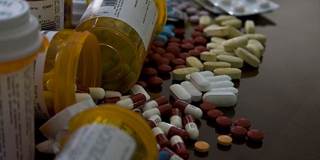The world urgently needs new drugs to replace the antimicrobial drugs that are losing effectiveness, but the incentives to invest in research are missing. A solution need not be expensive, especially when compared to the alternative: $100 trillion in lost output by 2050 and ten million deaths every year.
JAKARTA – In December, I reported the first findings of the Review on Antimicrobial Resistance, which I chair. The news wasn’t good: Resistant infections already claim more than 700,000 lives a year. Unless action is taken, antimicrobial resistance will kill ten million people a year by 2050 – more than the number of people who currently die from cancer. It will also have a cumulative cost of at least $100 trillion, more than 1.5 times today’s annual global GDP.

JAKARTA – In December, I reported the first findings of the Review on Antimicrobial Resistance, which I chair. The news wasn’t good: Resistant infections already claim more than 700,000 lives a year. Unless action is taken, antimicrobial resistance will kill ten million people a year by 2050 – more than the number of people who currently die from cancer. It will also have a cumulative cost of at least $100 trillion, more than 1.5 times today’s annual global GDP.